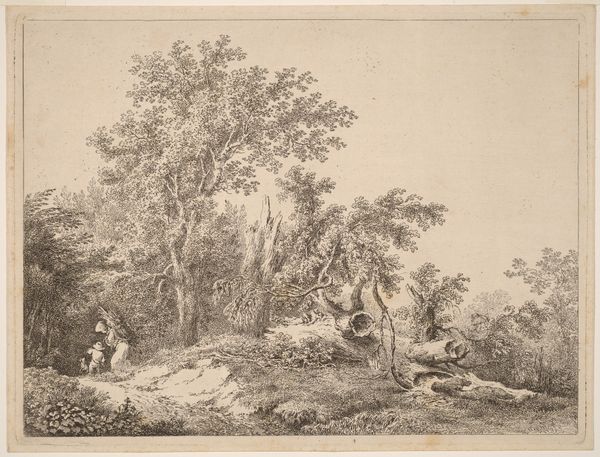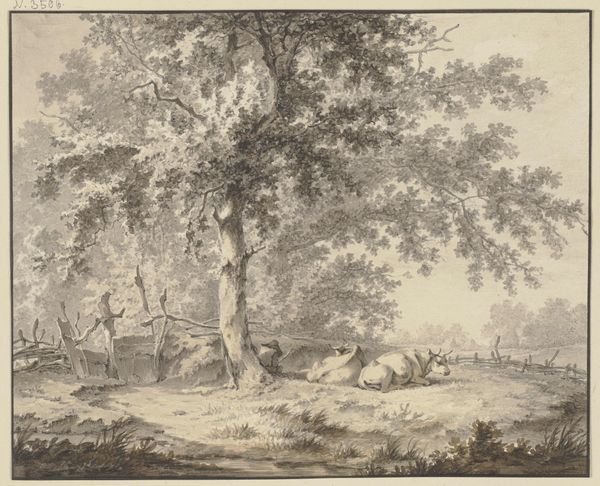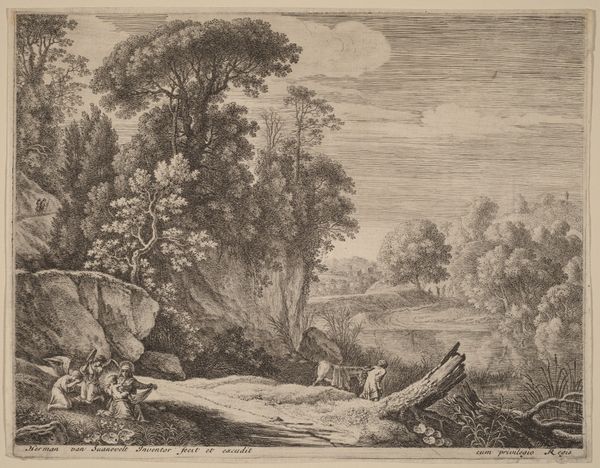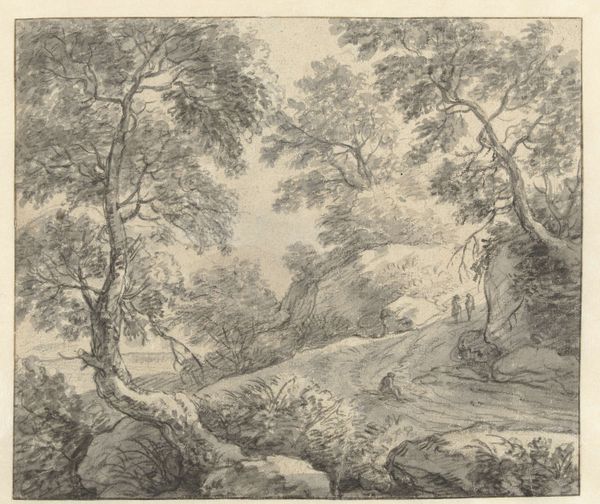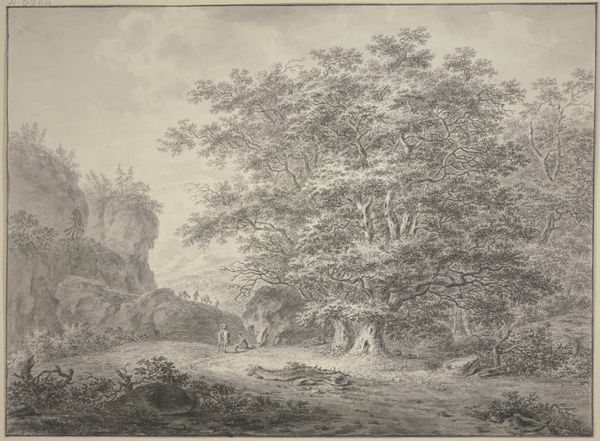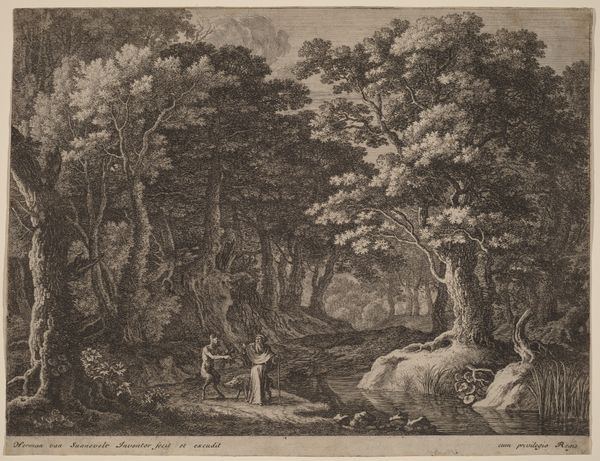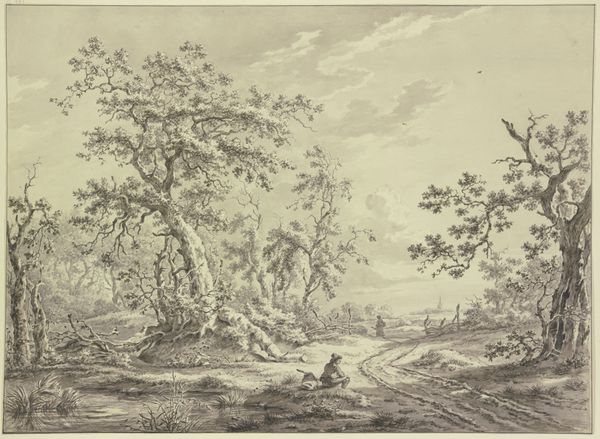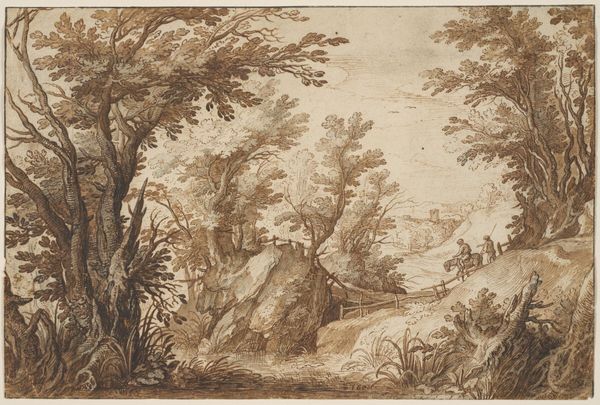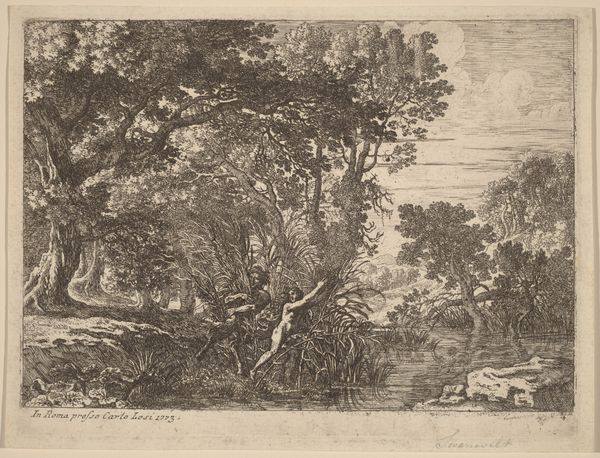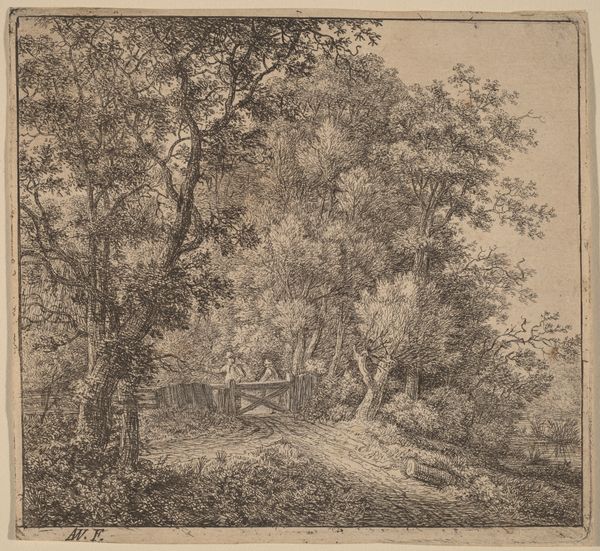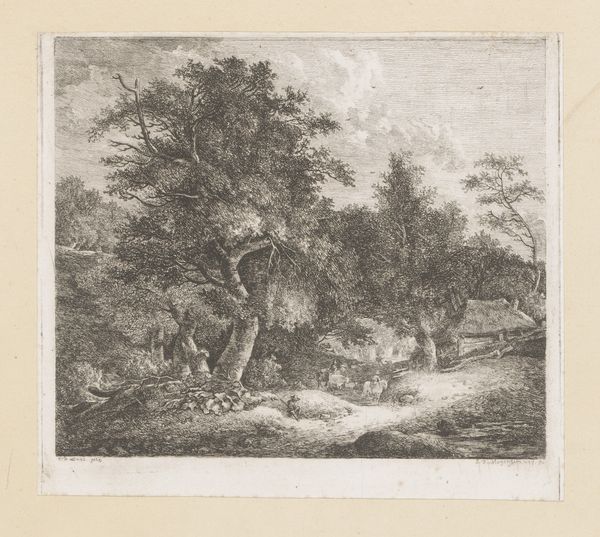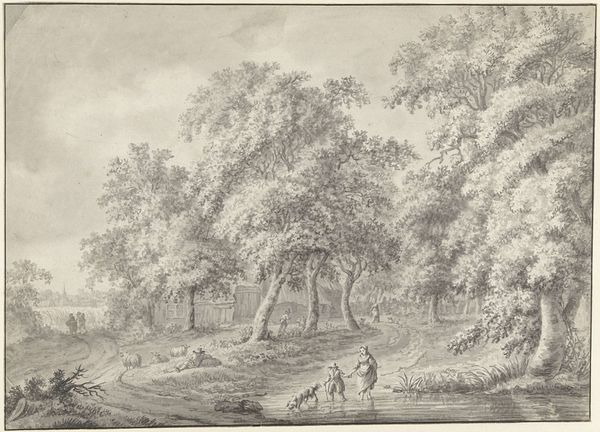
drawing, print, etching, paper
#
drawing
# print
#
etching
#
landscape
#
paper
#
pencil drawing
#
realism
Dimensions: 236 × 318.5 mm (image); 246 × 328 mm (plate); 250 × 330 mm (sheet)
Copyright: Public Domain
Curator: Looking at "The Fallen Tree Trunk," a landscape by Martin von Molitor, dating back to no specific date, rendered as an etching. The first impression is somewhat melancholic, wouldn't you say? Editor: Yes, there’s a stillness to it. The intricate line work of the etching gives it a detailed realism. But that stark contrast also feels a bit forlorn, and gives the sense of the cycle of decay and regeneration. Curator: Von Molitor, despite his relative obscurity today, circulated in circles where nature and its allegorical interpretations held cultural importance. Rural escapes became increasingly important among those witnessing the growing urban squalor of emerging industrial centers. His detailed etching highlights this perspective of a return to nature. Editor: The composition draws the eye in stages from the edges towards the center of the work. The figures on the left do present a human presence, grounding the entire image. But still, one finds himself following the eye further to the log lying horizontally, suggesting its final resting place, dominating the visual weight of the piece. It really does ask the viewer to question temporality. Curator: Certainly. One could delve into theories surrounding depictions of nature within emerging ideas of nationalism. Representing the organic, untamed world becomes more pronounced during specific eras and cultural geographies. Editor: From a strictly visual standpoint, this is about the contrast between light and shadow, between the organic and the ordered. What’s striking to me is how he has crafted this work as something more than a picturesque scene but more like an experience to question our own position relative to these concepts. Curator: That's well said, and an insightful perspective on the intersection of form and historical context. This serves as a lens to the historical trends that led us to seek refuge in the beauty of nature. Editor: Precisely, and in appreciating his skilled technique we see how those trends find their resonance through visual form, encouraging thoughtful observation.
Comments
No comments
Be the first to comment and join the conversation on the ultimate creative platform.
